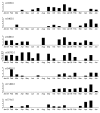Epidemiology of Streptococcus dysgalactiae subsp. equisimilis in tropical communities, Northern Australia
- PMID: 18217553
- PMCID: PMC3375807
- DOI: 10.3201/eid1311.061258
Epidemiology of Streptococcus dysgalactiae subsp. equisimilis in tropical communities, Northern Australia
Abstract
Streptococcus dysgalactiae subsp. equisimilis (groups C and G streptococci [GCS/GGS]) is an increasingly recognized human pathogen, although it may follow indirect pathways. Prospective surveillance of selected households in 3 remote Aboriginal communities in Australia provided 337 GCS/GGS isolates that were emm sequence-typed. Lancefield group C isolates (GCS) were localized to specific households and group G isolates (GGS) were more evenly distributed. GCS/GGS was more frequently recovered from the throat than group A streptococci (GAS [S. pyogenes]) but rarely recovered from skin sores, and then only with Staphylococcus aureus or GAS. Symptomatic GGS/GGC pharyngitis was also rare. Specific emm sequence types of GCS/GGS did not appear to cycle through the communities (sequential strain replacement) in a manner suggesting acquisition of type-specific immunity. These communities already have high levels of streptococcal and poststreptococcal disease. GCS/GGS may increase in importance as it acquires key virulence factors from GAS by lateral gene transfer.
Figures


References
-
- Williams GS. Group C and G streptococci infections: emerging challenges. Clin Lab Sci. 2003;16:209–13. - PubMed
Publication types
MeSH terms
LinkOut - more resources
Full Text Sources
Medical
